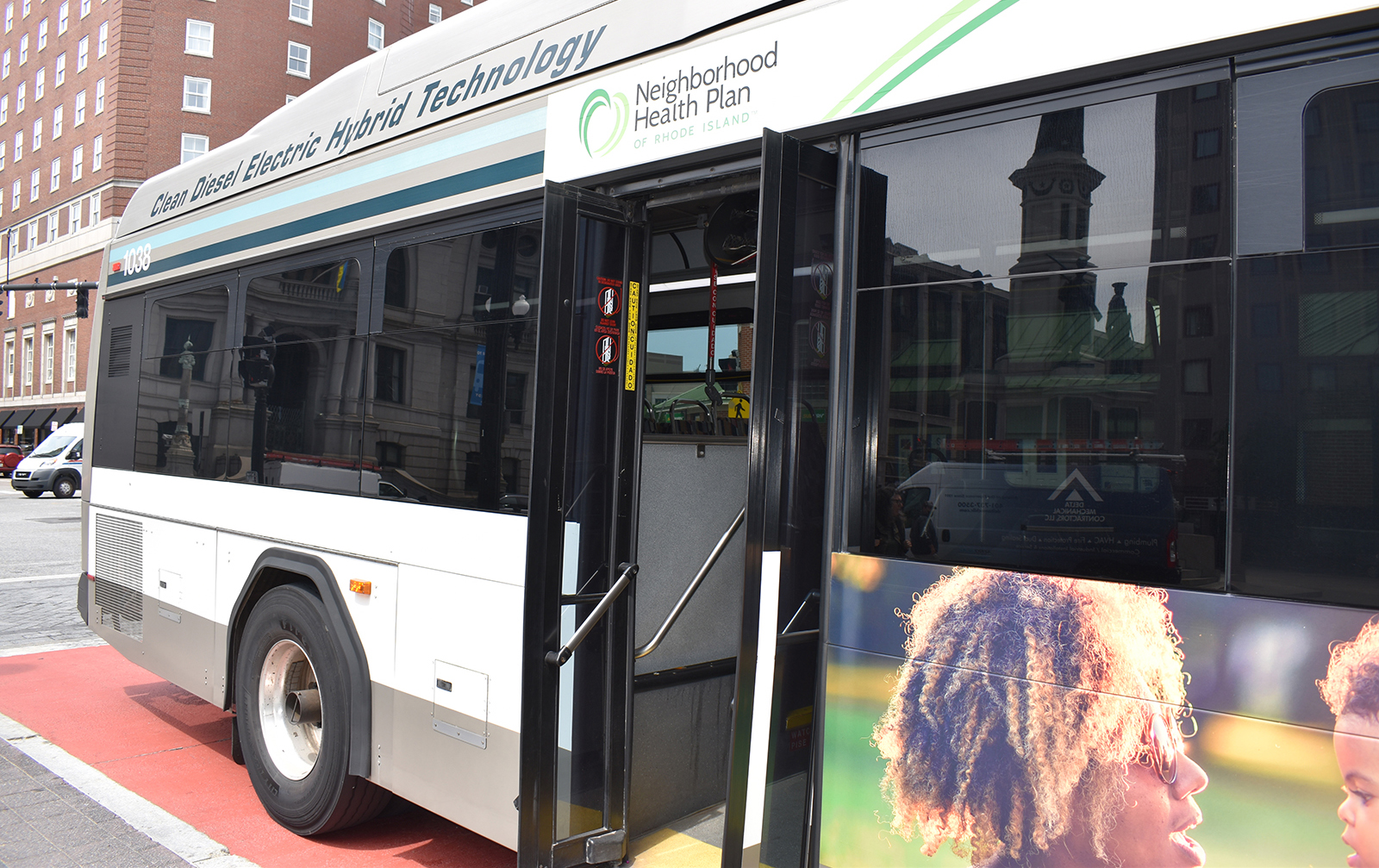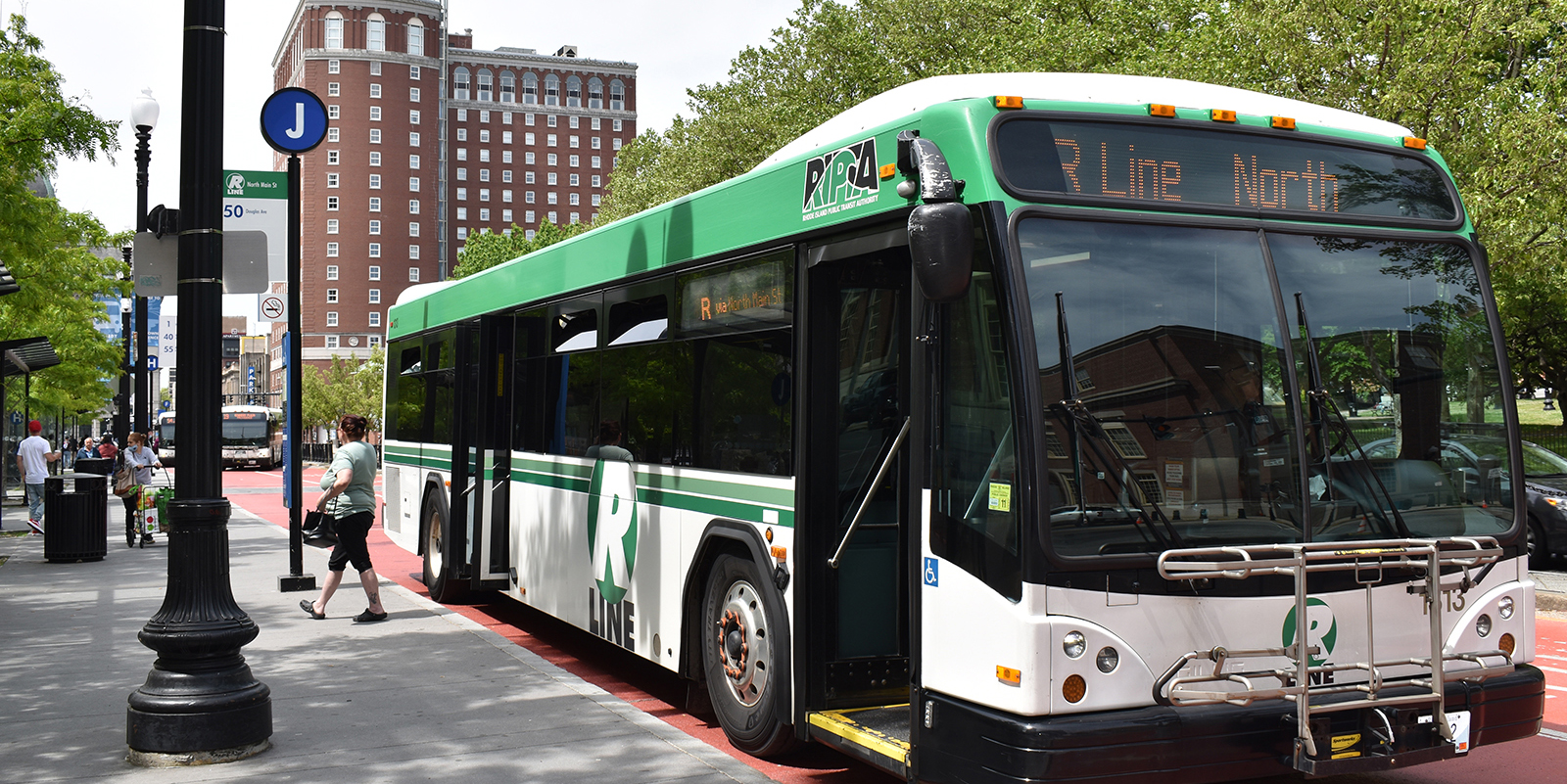Mayor Boosts Commitment to Complete Streets
March 23, 2016
PROVIDENCE — The Bicycle Pedestrian Advisory Commission’s March meeting was dedicated to gathering public input about the city’s bike infrastructure needs. Residents recommended specific streets in need of facilities, as well as general infrastructure design preferences.
Mayor Jorge Elorza signed an executive order aimed at aligning the city’s road repair and construction plans with its complete-streets resolution. The Department of Planning and Development (DPD) announced that it will update the infrastructure portion of the city’s bicycle master plan. The Office of Sustainability announced that it has secured some public funding for the city’s proposed bike-share program.
Executive order
Elorza signed an executive order requiring all “significant” street and sidewalk repair or construction projects to go before the Bicycle Pedestrian Advisory Commission (BPAC) for review during conception and design phases. The new process gives the commission and the public greater opportunity to make recommendations on specific projects early enough to ensure they are considered and, if appropriate, incorporated.
Significant streets include those designated as needing improvement in the city’s bicycle master plan, all arterial or collector roads, and any project within 300 feet of a school or recreation center. Repair and construction projects include any that change the curb line, curb cuts or traffic geometry, any that include restriping of traffic geometry, or any new construction or improvement of off-road bicycle paths or multi-use trails.
The executive order will ensure that all significant projects have complete-street ideas included from the beginning rather than being an afterthought, Elorza said.
Bicycle master plan
The city’s bicycle master plan, last updated in 2013, will be partially updated during the course of this year. The update will provide guidance to the city’s Department of Public Works and Rhode Island Department of Transportation about locations in need of bike infrastructure, preferred types of bike infrastructure and the city’s priority projects, said Martina Haggerty, DPD’s associate director of special projects.
The updated plan will include current best practices relating to infrastructure issued by bicycle advocacy groups, such as the National Association of City Transportation Officials (NACTO) and government agencies, such as the Federal Highway Administration, according to Haggerty.
The update also will recommend expanding the current network of bike lanes and improving the network’s connectivity using on-road bike lanes, separated bike lanes and shared-lane arrows (sharrows), Haggerty said.
Here is a a list of some priority projects that will be included in the bike plan:
City Walk, a proposed 7.5-mile, multi-modal corridor connecting Roger Williams Park to India Point Park via Broad Street and Elmwood Avenue.
Link District, the land uncovered by the relocation of I-195 land.
Pedestrian bridge over the Providence River, which Haggerty said will soon go out to bid and should be under construction by next summer.
Fountain Street between Kennedy Plaza and Empire Street, which will be fitted with a separated bike lane.
The boulevard that replaces the 6-10 connector — should it come to pass — which would include pedestrian, bike and transit amenities.
Promenade Street and Kinsley Avenue, which would be redeveloped to better connect the Woonasquatucket River Greenway to Waterplace Park and downtown, and offer improved access to the river.
Olneyville Square and Dike Street.
Huntington Avenue, which would connect the South Side and the Washington Secondary Bike Path in Cranston.
Henderson Bridge over the Seekonk River, which could be redesigned to better balance available space between bikes, pedestrians and motorists.
Dean Street between Smith Street and Atwells Avenue, which Haggerty described as “absolutely terrifying and dangerous.”
North Main Street.
Connecting the Washington Secondary Bike Path to the Woonasquatucket Greenway and downtown also was noted as a priority. The off-road segment of the Blackstone River Bike Path connecting India Point Park and Eastside Marketplace via the Seekonk River shoreline is also ready to go out to bid, Haggerty said.
The DPD will hold listening sessions in neighborhoods around the city during the spring and early summer to get community input, and then release a draft update in the fall.
Bike share
The city is undertaking a $17 million project to build a 1.4-mile, six-stop enhanced downtown bus corridor that would connect the Providence train station to the hospital district with buses that run at 5-minute intervals. Part of the project’s funding will go toward installing 12 bike-share stations of about 10 bikes each along the corridor.
This bus corridor would mostly be funded by a $13 million Transportation Investment Generating Economic Recovery (TIGER) grant initially secured by the city and the Rhode Island Public Transit Authority (RIPTA) for a streetcar project that has since been scrapped.
Leah Bamberger, the city’s sustainability director, said the commitment of public money to the bike-share program may catalyze a private sponsor to fund the remainder of the proposed network. In the past, potential sponsors have walked away, in part, because the city had “no skin in the game,” she said. Bamberger estimated that a successful network would require 450 bikes.
“We need a significant capital investment from the private sector to make it happen. This step demonstrates public commitment in the project,” she said. “We don’t want to launch a small system that’s not successful.”
Public comment during the recent meeting regarding the bike-share program was mixed. A Federal Hill resident said such programs succeed in cities with larger bicycling and tourist populations than exist in Providence.
Jonathan Harris, transportation committee chair for the Rhode Island Sierra Club and co-founder of Moving Together PVD, said the bike-share program should be launched after the city invests in bike infrastructure, otherwise people will not use it.
Bamberger noted that Boston launched a successful bike-share program prior to making major investments in bicycle infrastructure. She said it’s not an either-or proposition; bike share and infrastructure improvements will happen concurrently. Alex Krogh-Grabbe, executive director of the Rhode Island Bicycle Coalition, said at least one expert he spoke with agreed that bike-share programs are generally successful when they happen in concert with infrastructure improvements.
Public comment
Ella Boyan, a Providence middle-school student, asked the city to prepare its streets for her future commute from the East Side to Classical High School. Boyan recommended adding bicycle lanes on Washington Street and the Washington Street Bridge, and improving bike and pedestrian safety at the intersection of Washington Street and Empire Street.
She created a 5-minute video (above) explaining her preferred solutions, which was shown to 40 members of the public, BPAC commissioners and the mayor during the recent meeting.
Public comment regarding the segment of the Blackstone River Bike Path between India Point Park and Eastside Marketplace was mixed. James Kennedy, author of the blog Transport Providence, recommended spending the $1.5 million budgeted for the project on less expensive forms of bike infrastructure in higher density parts of the city.
Kennedy recommended that the city replace some traffic signals with four-way stops, a strategy he said would improve traffic flow, calm traffic and cost less in maintenance.
Krogh-Grabbe recommended that the city develop bike routes to the train station, and routes that allow easier travel through downtown. He also noted that the city’s priority projects overlook the northwest corner of the city. Krogh-Grabbe and many others requested that the city de-emphasize sharrows and focus on building separated bike lanes and off-road paths. Harris added that studies show many people don’t feel safe enough to ride a bicycle until separated bike lanes are built.
Krogh-Grabbe also recommended that the city measure demand for parking to determine where parking is important and where removing it in favor of bike facilities would be more beneficial. He also the city should hire a dedicated staff person for bike issues.
Ed Raff, a board member of Recycle-A-Bike and founder of ONE Providence Cycling, recommended replacing on-street car parking with on-street bike parking. He also recommended investing in more “may use full lane” signage and focusing on ensuring school zones are bike friendly.
Kennedy said eliminating parking minimums for cars is more important than adding parking requirements for bikes. Parking minimums stifle development and raise the cost of living for residents, he said.
A resident of the East Side recommended making Butler Avenue, the connecting road between the bike lanes on Blackstone Boulevard and the proposed section of the Blackstone River Bike Path beginning at Eastside Marketplace, more bicycle friendly.
Categories
Join the Discussion
View CommentsRecent Comments
Leave a Reply
Your support keeps our reporters on the environmental beat.
Reader support is at the core of our nonprofit news model. Together, we can keep the environment in the headlines.
We use cookies to improve your experience and deliver personalized content. View Cookie Settings




Thanks for this important update. I wonder how those of us who could not come might make some suggestions? Just in my commute, I use Waterman and Angell Streets, both of which have a three foot lane marked on the left, but no bicycle facility markings. Also, the lanes are perilous in the condition of the asphalt. These lanes are safer than riding on the right where car doors often swing open, so I hope they can be expanded a bit and properly signed and paved. Thanks!